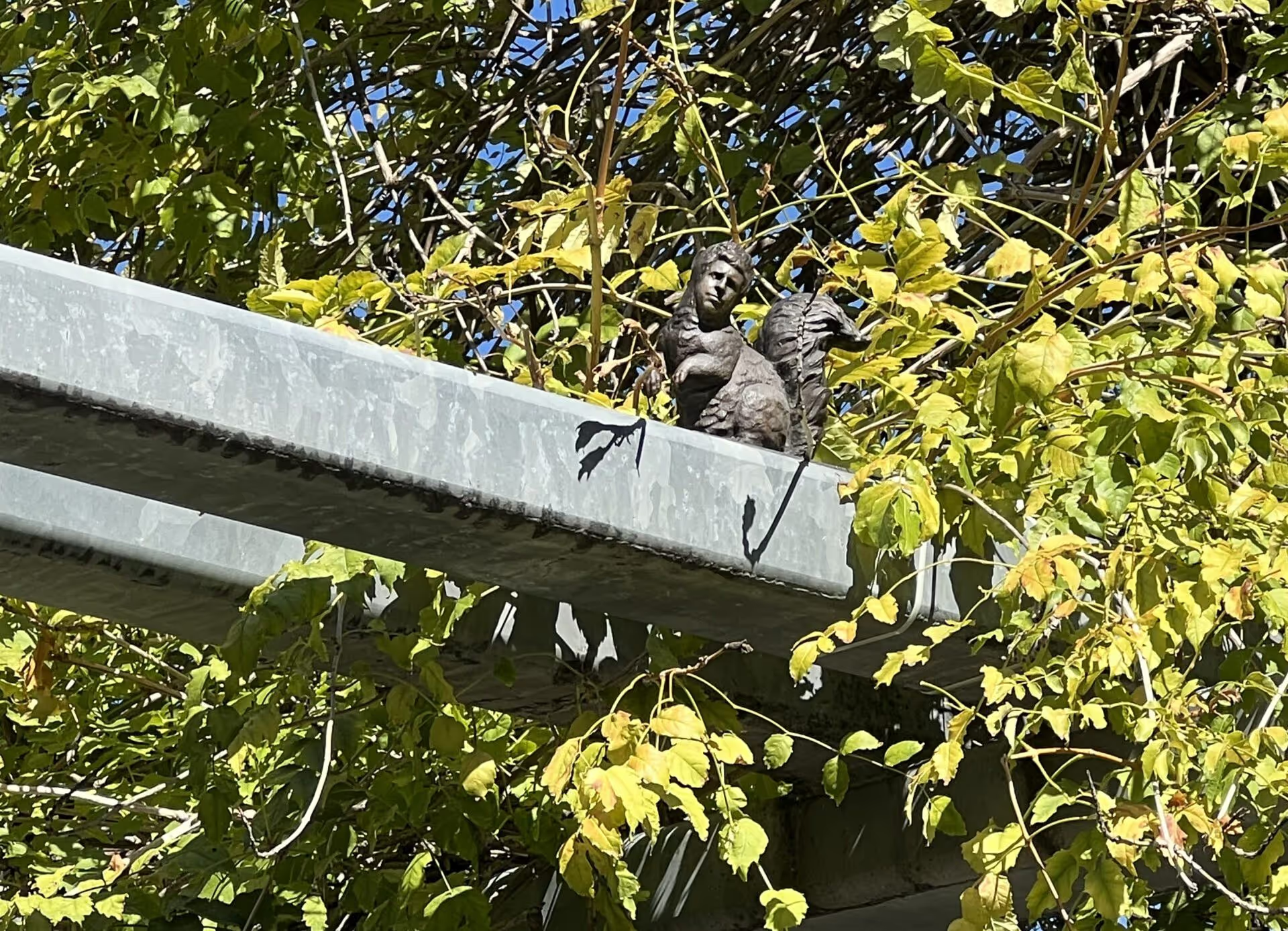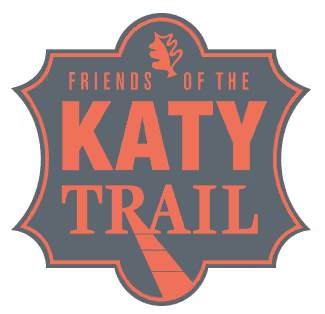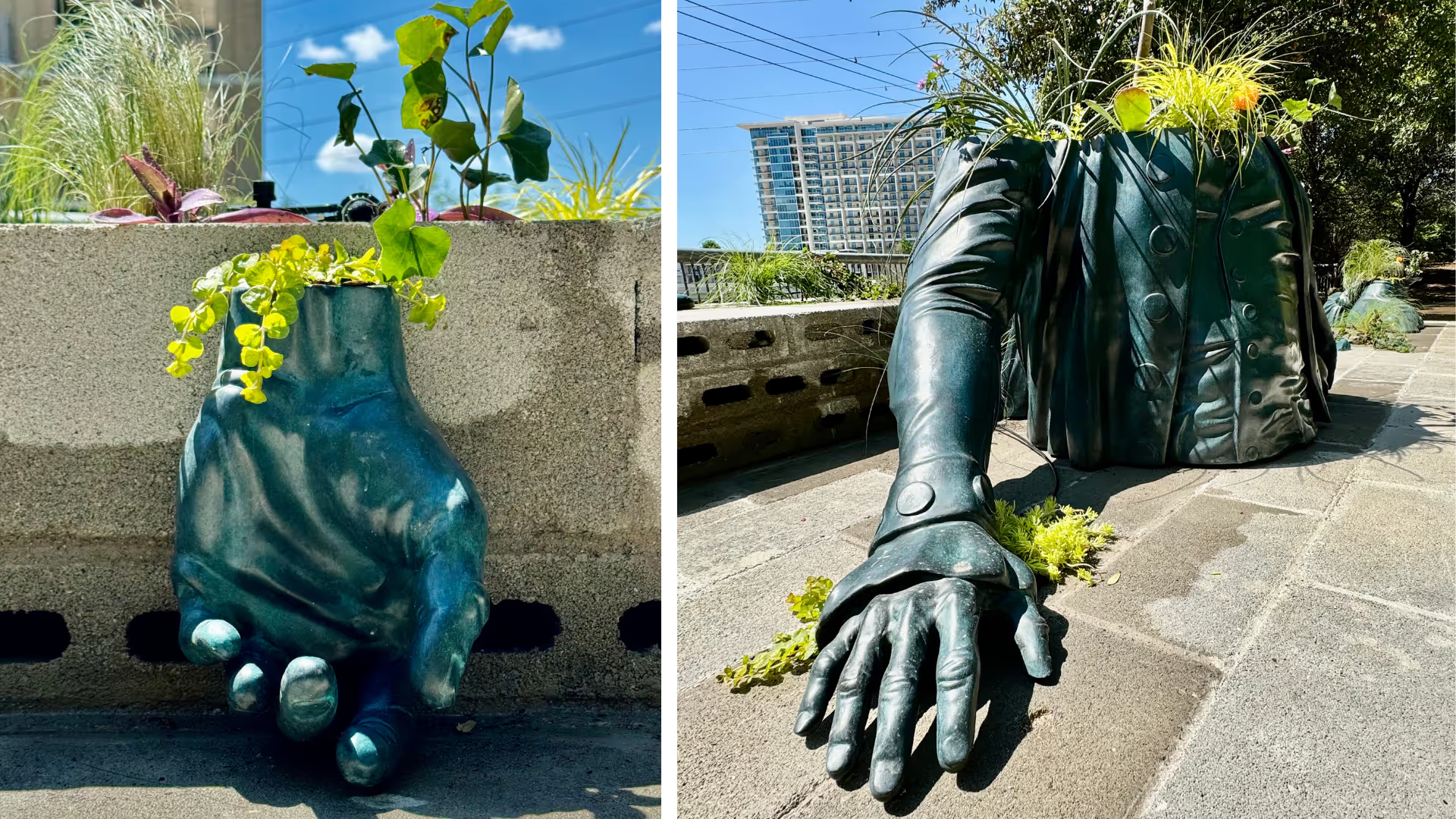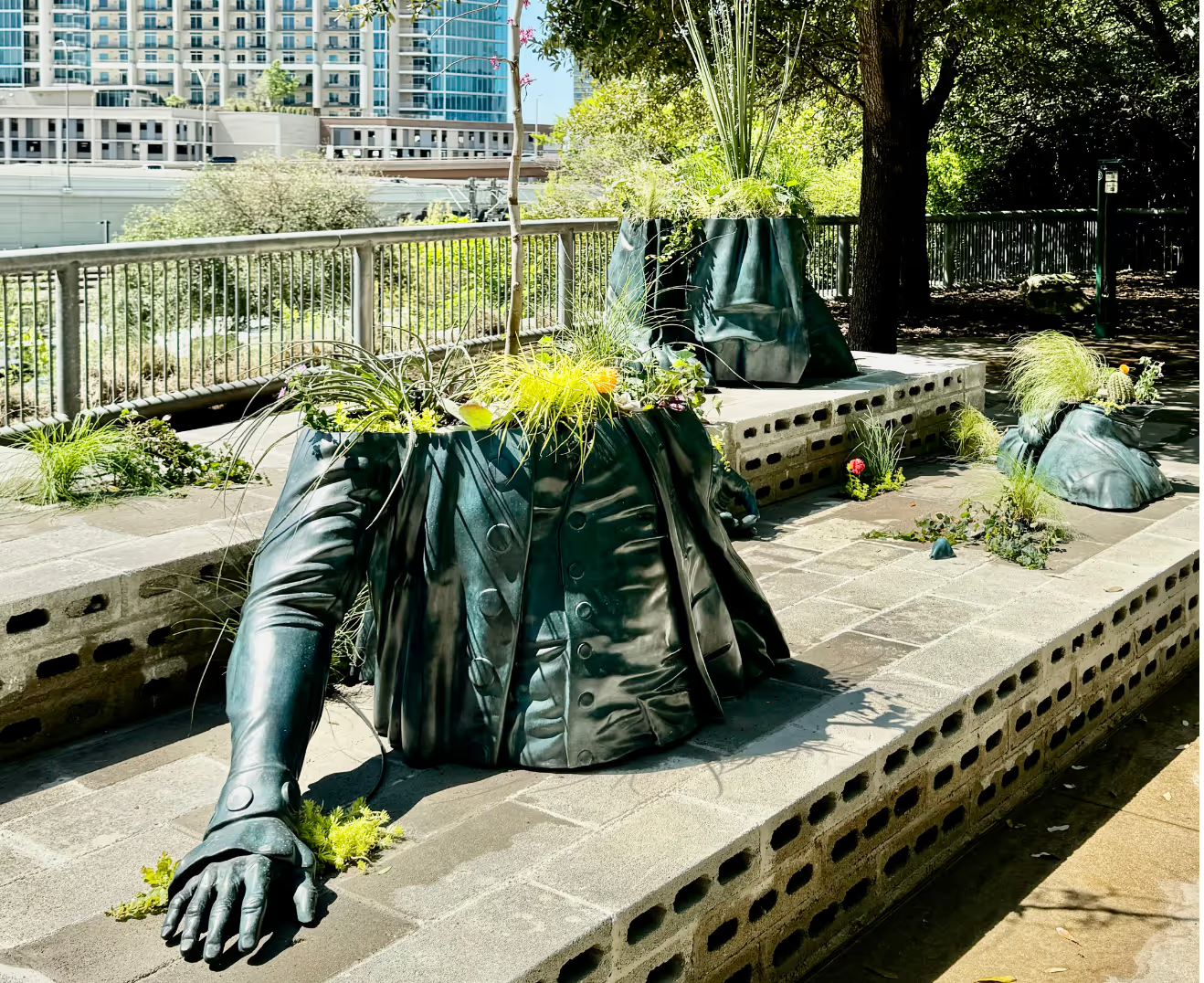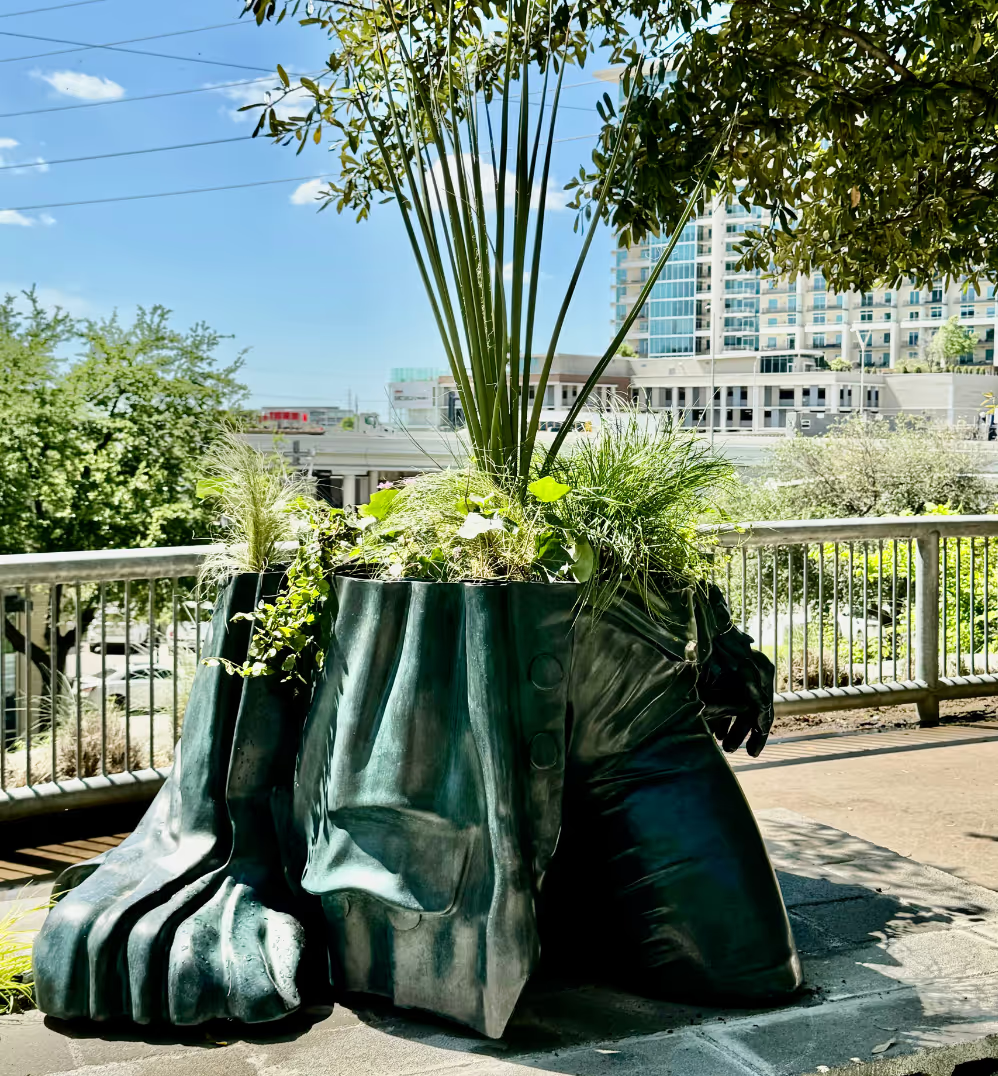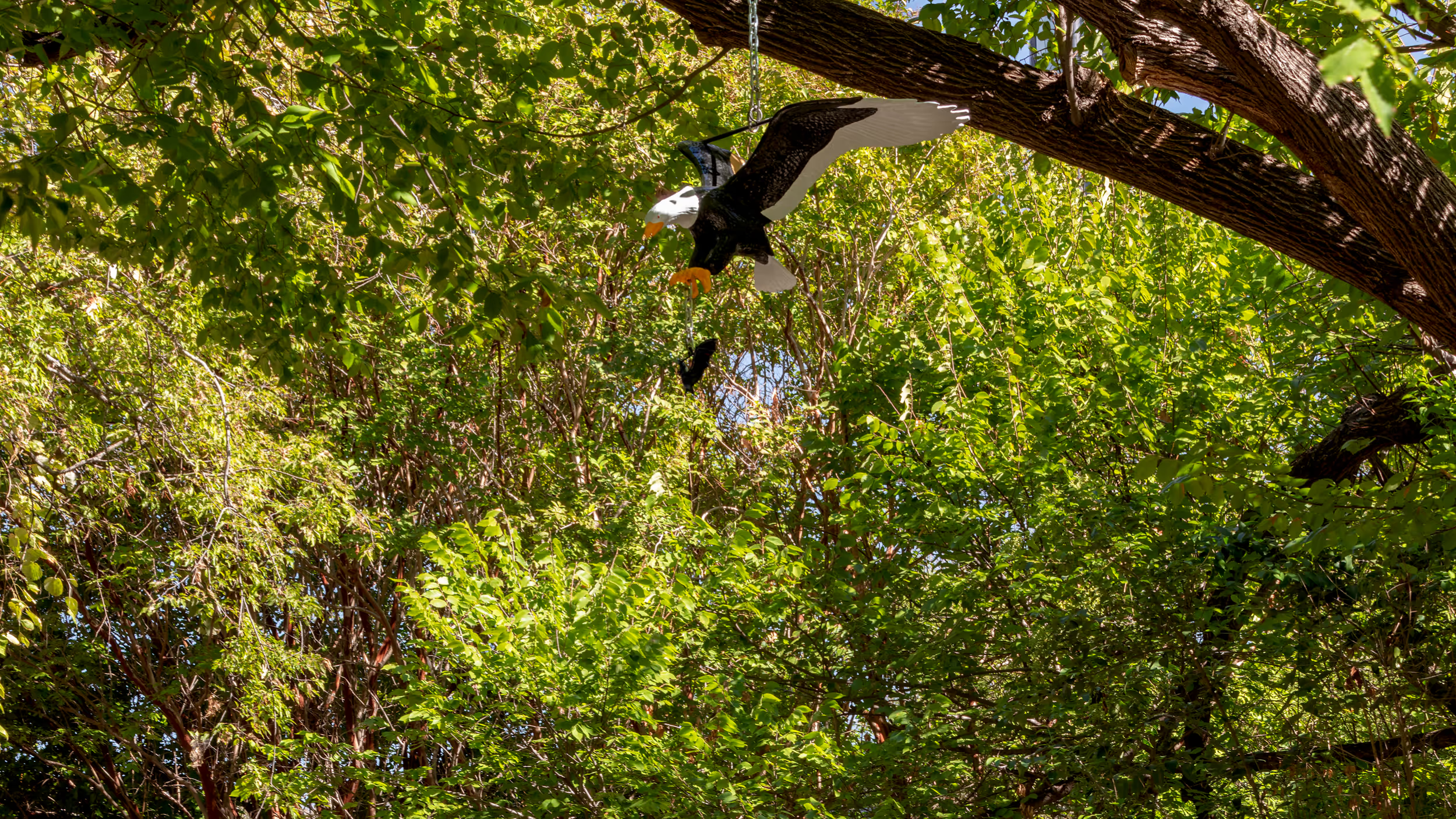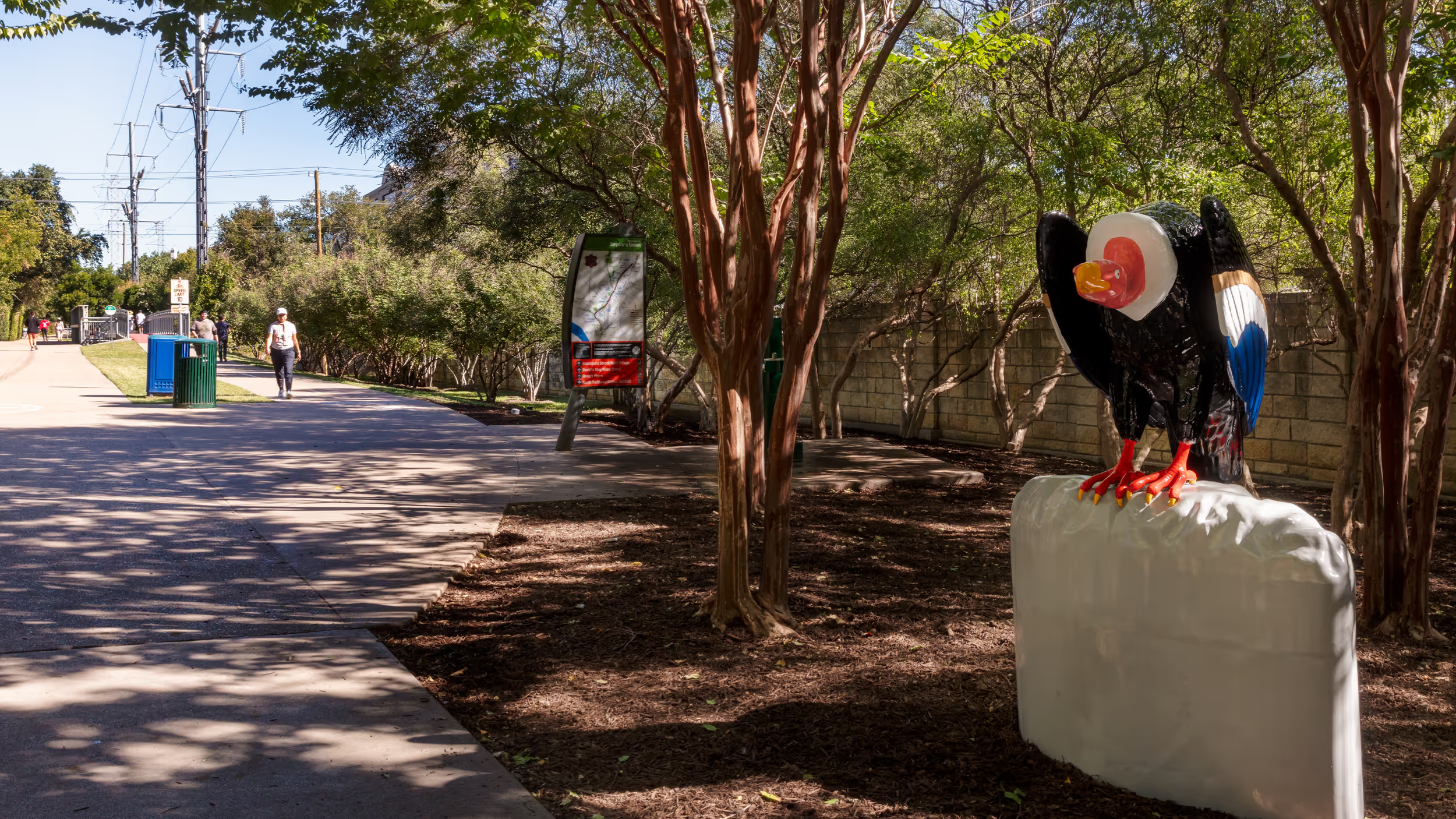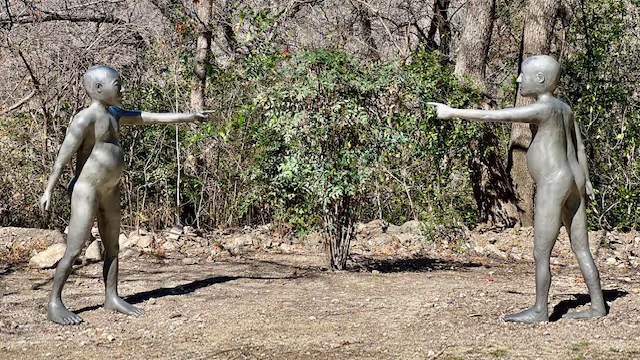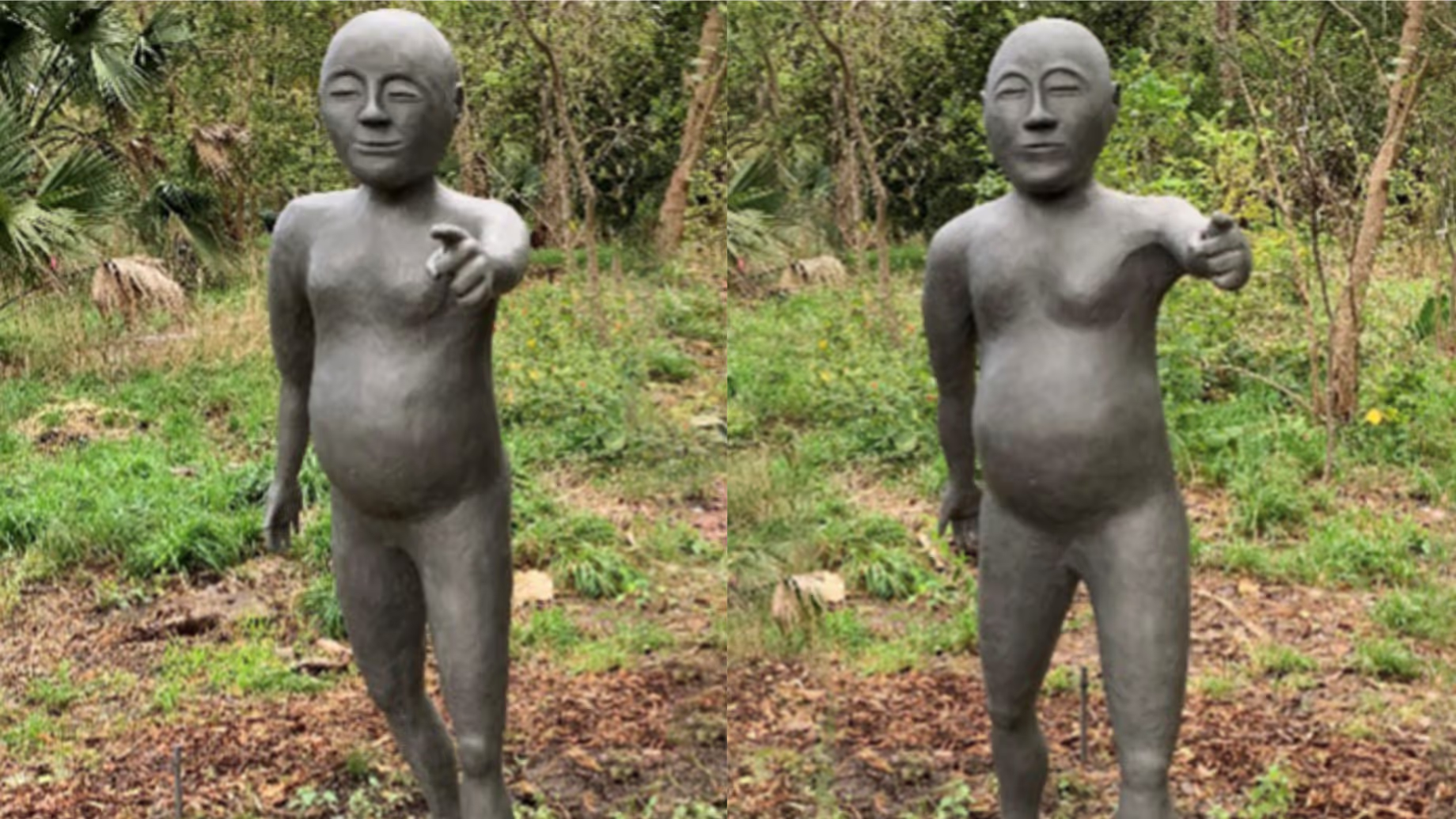Katy Trail Art
Katy Trail Art partners with Dallas area museums, artists, art collectors and the community at large to expand the role of contemporary art around Dallas.
The Initiative borrows, commissions, and produces world-class art projects on and around the Katy Trail to inspire creativity, spark conversation, encourage self-reflection, challenge assumptions, foster community building, and promote civic ownership of the Katy Trail.
We are excited to announce that Amanda and Charlie Shufeldt gave a $50,000 gift to Katy Trail Art plus a matching gift of $50,000 for additional Art Society donor gifts at the end of 2023. We would also like to acknowledge all Founding Donors of Katy Trail Art to date:
Anonymous
Pat Baudendistel
J. Patrick Collins
Bela and Chase Cooley
Jennifer and John Eagle
Faisal Halum and Brian Bolke
Christina and Sal Jafar
Laura and Greg Koonsman
Kasey and Todd Lemkin
Ann and Chris Mahowald
Jessica and Dirk Nowitzki
Janelle and Alden Pinnell
Kelli and Allen Questrom
Cindy and Howard Rachofsky
John S. Relton
Ginny Searcy
Sewell Automotive Companies
Lindsay and Blake Shipp
Amanda and Charlie Shufeldt
Amy and Les Ware
Peggy and Mark Zilbermann
Wild Flowers, by Iván Argote: Katy Trail Art in partnership with the Dallas Museum of Art, located at Victory Overlook
Katy Trail Art presents Iván Argote’s Wild Flowers for the first time in outdoor public space to engage with visitors to the Katy Trail. Begun in 2021, Wild Flowers is an ongoing series of immersive installations comprised of scattered cast bronze fragments of a figurative statue. A torso, pelvis, hand, and feet are transformed into planters that hold local plants and flowers endemic to the region. Appearing as if nature has taken over and playing upon notions of monuments and time, the artist prompts the viewer to wonder if the statue is being removed, abandoned, or getting ready to be installed.
Over his career, Argote has continuously engaged with and appropriated public monuments—from performance interventions such as the mock removal in Paris of the statue of Joseph Gallieni, the French colonial administrator in Africa and Southeast Asia, to interactive installations such as the draping of Indigenous ponchos over statues of conquistadors and rulers in Bogotá, Madrid, and Los Angeles.
Suspended in the ambiguous space of becoming, Wild Flowers seeks not to define but animate public space, contemplation, and dialogue. Born and raised in Bogotá, Columbia and now living and working in Paris, Argote has been fascinated with the varied and changing perspectives around public space and with each new generation. As permanent monuments ironically stand in the sea of changing public opinion and social and historical contexts, he endeavors to reimagine the future possibilities and functions for public sculpture.
Raised on a tiered platform of cinder blocks, visitors to the Katy Trail are invited to take a rest and interact with the Wild Flowers installation of grandiose planters. Such elements of humor and play often permeates Argote’s work because they allow a space for dialogue and nuance especially around contentious topics. "Humor or affection can help us find a common ground,” says Argote. “It's all about generating empathy. Tenderness and humor are subversive in such a hard world." From the ruins of a monument can come new life, conversations, and meanings.
About the Artist: Iván Argote is a Colombian artist and filmmaker based in Paris. Through his sculptures, installations, films and interventions, he questions our relationship with others, power structures, and belief systems. He develops strategies based on tenderness, affect, and humor through which he generates critical approaches to dominant historical narratives.
Recent exhibitions include the 60th Venice Biennale “Foreigners Everywhere” in 2024, the Bruges Triennial in 2024, and his solo exhibitions “The Burden of the Invisible” at the SCAD Museum of Art in 2024 and “All Here Together” at Artpace in 2021. His work is included in the collections of the Guggenheim Museum, the Centre Pompidou, among others, and he was nominated for the Centre Pompidou’s prestigious Prix Marcel Duchamp in 2022.
Desert Eagle (2022) and Turkey Vulture (2021–22), by Will Boone, located at Snyder's Union
The Katy Trail presents two recent works, Desert Eagle (2022) and Turkey Vulture (2021–22), by Will Boone. These are a part of a series of hand-painted bronze sculptures that the artist began in 2017, which have previously been displayed in gallery settings and as outdoor public sculpture.
While living in California, Boone became fascinated with plastic figurines of, among other subjects, athletes, monsters, politicians, and animals, found in hobby model kits. The artist drew thematic and archetypal parallels between these miniatures and the bronze sculpture of the Hellenistic period in Ancient Greece. In Boone’s body of work, Frankenstein becomes a stand-in for Medusa, JFK replaces Alexander the Great, Willie Mays takes over for the Seated Boxer, and a pitbull is the snarling descendent of the Molossus. Casting them in bronze and employing the same lost-wax process that has been used for 6,000 years, Boone elevates the plastic figurines of our contemporary culture to heroic scale. The artist then hand-paints these sculptures in garish colors using the type of enamel paint preferred by the American hobbyists who assemble the plastic models. As a result, the bronze, and its associations of elegance, is hidden from view; the works instead resemble the cartoonish roadside attractions and high school football mascots common to the artist’s home state of Texas.
Comprising a bald eagle chasing a bat, both hung, in this presentation, from a mature American elm, Desert Eagle takes its name from the most powerful handgun legally available in the United States. The eponymous bird has other potent, and often violent, associations: in Greek mythology, Zeus used an eagle as an instrument of divine and righteous punishment. It is also a symbol of American freedom and nationalism, yet due to the country’s use of DDT pesticides and predatory hunting practices, the eagle’s population was reduced to the verge of extinction in the twentieth century.
The avian subject of Turkey Vulture sits upon a rock base, much like the committee of vultures that roosted along a ridgeline in Comal County, where Boone resided upon his return to Texas in 2021. Despite being a powerful figure in many Mesoamerican myths, vultures often evoke negative associations—as scavengers or bottom feeders, symbolizing death and decay. However, these birds are critical catalysts in the cycle of life. Turkey Vulture reframes this misunderstood creature as a meaningful contributor to a larger ecosystem, whose thankless work cleaning the roadkill and rotting detritus should be recognized.
Transformed from cultural icons into bronze monuments and then back, once again, into symbols of American life, Boone imagines these works undergoing still another alchemical and metaphorical change: unearthed by another civilization long after the artist’s existence, the sculptures will have shed their paint and oxidized, their materiality enduring like that of the ancient world.
the twins, Nasher Public and Katy Trail Art: Nic Nicosia, located at Thomsen Overlook
Best known for his work in photography and film, Nicosia initially came to international prominence as part of the Pictures Generation, artists who came of age in the 1970s and whose work was suffused with images from popular culture that also included figures such as Richard Prince, Laurie Simmons, and Cindy Sherman.
Although he often built sets and props for his elaborately staged photographs, Nicosia only began to make sculptures around 2009–10. Early experiments in paper clay and hydrocal included a group of eccentric personages reminiscent of works by Max Ernst, whimsical wire portraits harkening back to the early work of Alexander Calder, and anonymous figures taking on various poses and personas. Many of these were made independently of his photography, but they soon began to populate the models for his staged photographs and, more recently, real domestic interiors, resulting in images that confound reality and artifice.
The twins marks the beginning of Nicosia’s engagement with foundries and larger cast sculptures. A commission from The Austin Contemporary provided Nicosia with the opportunity to enlarge and cast in stainless steel two small, paper clay and hydrocal figures, on which the twins are based. Like much of the artist’s work in a variety of media, this sculpture is simultaneously familiar and surreal, whimsical and unsettling. The figures are generic, human-like, but with no overt indications of gender.
Although they are roughly the same size, the twins exhibit a number of distinctions: slight differences in their facial features, stances, and poses distinguish one from the other. Each raises its left hand and, in the configuration the artist determined for the installation on the Katy Trail, points toward the other. The gesture is also ambiguous and can be interpreted in a variety of ways: a sign of recognition, accusatory, or merely indicative. Their expressions—either stoic or bemused, but equally inscrutable with eyes closed or perhaps barely open—further complicate the reading of the gesture and the relationship between the two. Encountering the figures on the Katy Trail makes them seem like alien avatars in an alternate reality, suggesting opposite directions in a choose-your-own-adventure game.
See Our Past Art
Donation Information
Art Donor Levels And Benefits
Art Donation Form
Art Selection Committee
Amanda Shufeldt, Co-Chair
Charlie Shufeldt, Co-Chair
Jennifer Eagle
Vivian Li
Jed Morse
Jessica Nowitzki
Janelle Pinell
Howard Rachofsky
John Runyon
Blake Shipp
Peggy Zilbermann
